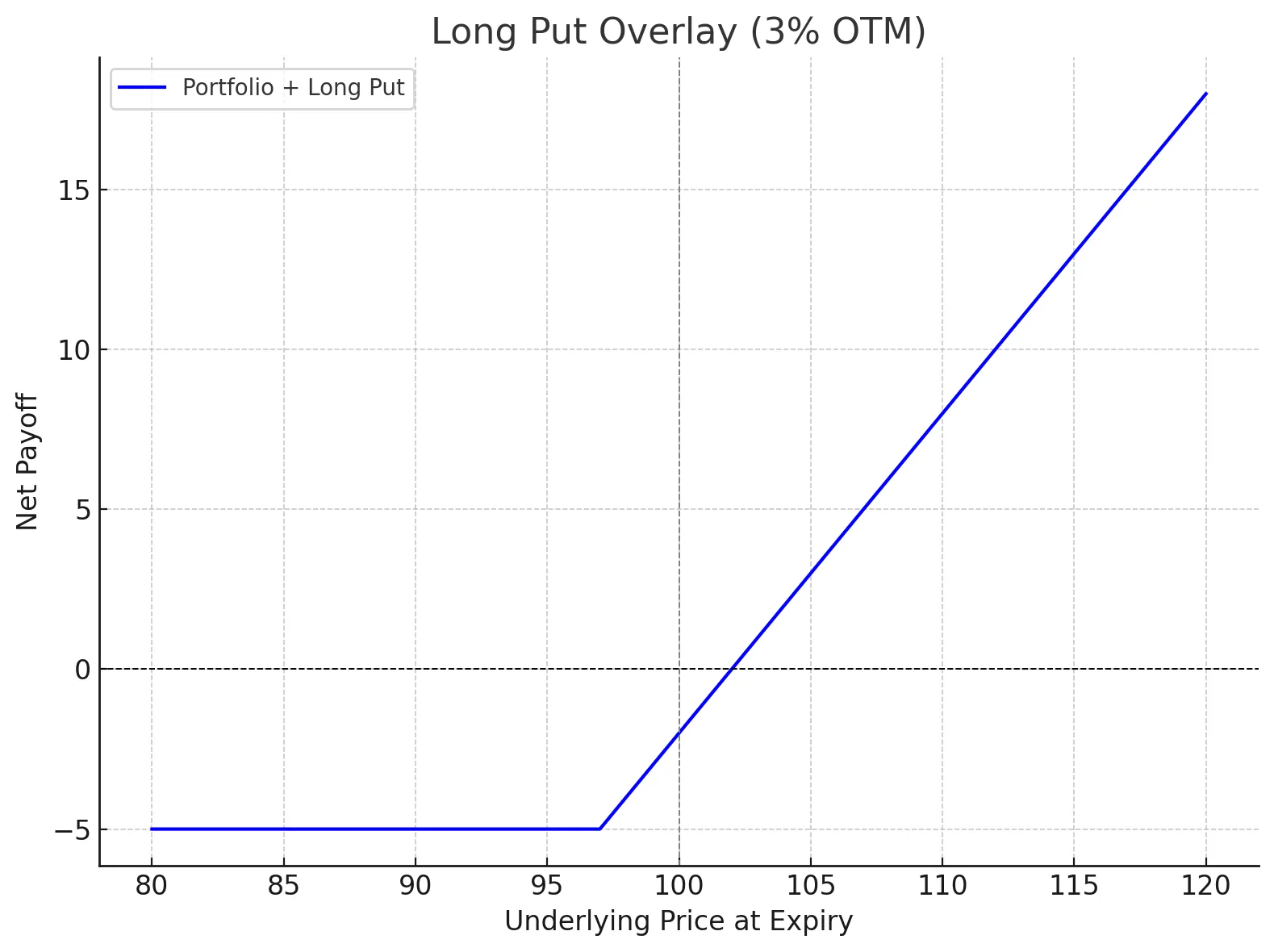Table of Contents
Volatility in global equity markets remains strikingly low, with the VIX trading at relatively low levels. This is despite the very real and escalating risks stemming from renewed trade frictions between the U.S. and multiple global partners. The 10% baseline tariffs are already in place, and the 90-day temporary exemptions granted to a subset of countries and sectors post-Liberation Day are now nearing expiry.
As these exemptions lapse, there's growing uncertainty around potential retaliatory measures, supply chain disruptions, and their knock-on effects on global macro conditions—all of which remain grossly underpriced by the options market in our opinion.
To be clear, we are not advocating a bearish stance. We remain long equities across our portfolios, supported by positive price action and strong near-term momentum. However, we believe that in light of the current pricing of volatility, it is prudent to begin layering in protective overlays through put options. These instruments currently offer a cost-effective form of insurance that can safeguard against unforeseen market drawdowns.
A Fragile Calm Amid Structural Risks
While equity indices continue to trend higher, supported by resilient earnings and AI-led momentum, the complacency reflected in volatility pricing is striking. Risks are brewing across multiple dimensions:
- Trade Policy Re-escalation: With the grace period ending, the likelihood of new trade barriers or tariff extensions is increasing, heightening uncertainty across sectors, particularly in manufacturing, autos, and technology hardware.
- Macro Spillovers: Tighter trade conditions could suppress global growth just as several economies begin to show signs of deceleration. The risk of demand-side shocks is particularly concerning for export-heavy markets.
- Valuation Stretch: Equity markets, especially in the U.S., are priced for a near-perfect outcome. Any macro or policy disappointment could trigger sharp risk-off moves.
Yet despite this, the VIX remains at low levels—providing what we believe is a tactical window for investors to protect portfolios.
Staying Long, Hedging Smart
At Lighthouse Canton, we continue to maintain a constructive long bias across portfolios. The strength in price action and continued fund inflows suggest that near-term momentum remains intact. However, we recognize the asymmetry of risk and believe this is the right time to consider cost-effective portfolio insurance.
We advocate the use of index-level put options to hedge against potential drawdowns while maintaining full exposure to the upside. These strategies allow investors to benefit from market rallies while containing downside risk in the event of volatility spikes.
How to Hedge: Tailoring Puts to Portfolio Exposure
Investors should select hedges that mirror the risk profile of their portfolios:
- Tech-Heavy / High-Beta Portfolios:
Consider puts or bear put spreads on the Nasdaq-100 (QQQ US). These instruments are more sensitive to moves in growth and tech, and align well with portfolios skewed toward AI, software, and innovation-heavy names.
- Diversified Sector Portfolios:
Prefer S&P 500 (SPX or SPY US) options, which provide broad-based protection and more stable delta profiles.

- Bear Put Spreads:
For those looking to reduce hedging costs, bear put spreads — buying a near-the-money put and selling a lower strike put — can be an effective way to cap downside while minimizing premium outlay.
.webp)
Final Thoughts: Insurance Is Best Bought When It's Cheap
We view the current volatility setup as an anomaly: a low VIX against a backdrop of elevated structural and policy risks. This mismatch presents a compelling opportunity to shore up downside protection before volatility re-prices.
Our portfolios remain long for now, in line with prevailing market momentum. But we believe it is prudent to layer in tactical hedges to guard against sharp reversals that often emerge when the market least expects them.
As always, risk management isn’t about calling tops—it’s about preparing for what the market isn’t pricing in.














.png)
%20(9).webp)
.webp)
